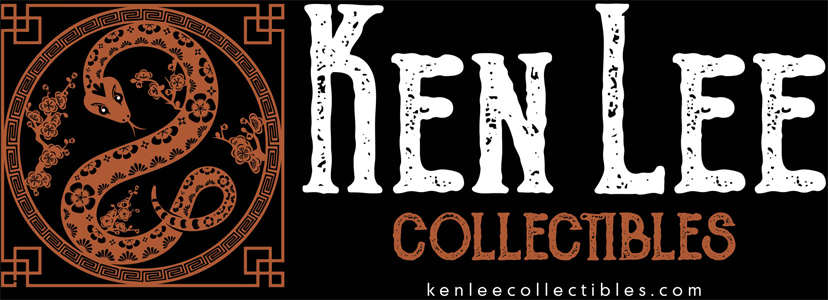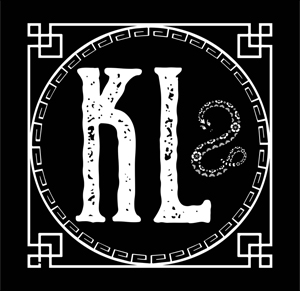

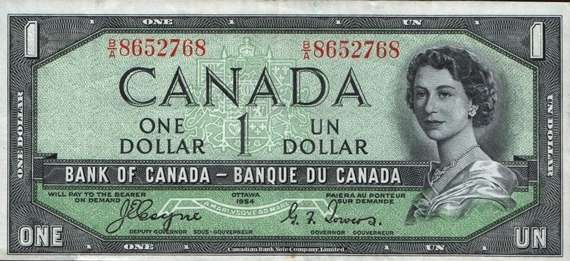

1 Dollar Banknote
Canada (1954)
This series caused controversy because highlighted areas of the Queen’s hair gave the illusion of a grinning demon behind the ear. The Bank of Canada had both bank note companies modify the face plates by darkening the highlights in the hair. These modifications were made in 1956 for all denominations.
Initially printed by CBN and later by BABN as well, the face of the $1 note features an engraving of Queen Elizabeth II based on a Karsh portrait that appears on all denominations in the series. The portrait was moved to the right to eliminate wear from folding. It was felt that the change from a decorative frame to a soft vignette would make counterfeiting more difficult. The Saskatchewan prairie scene on the back was engraved by Carl Louis Irmscher of ABN.

Canadian 2 Dollars (1954)
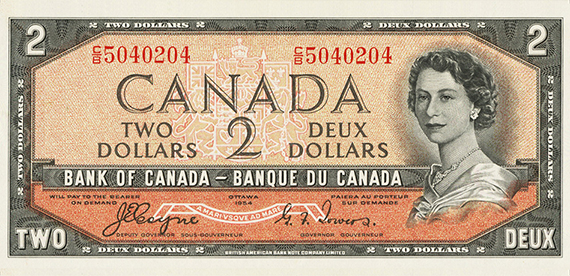

2 Dollars Banknote
Canada (1954)
The third series of Bank of Canada bank notes was prepared in 1952. Significant changes to the design of Canada’s paper currency gave it a whole new look that set the standard for the future.
The $2 note was printed by BABN. The back of the note, which features a view of the Saint-François River from Upper Melbourne, Richmond, Quebec, was engraved by BABN’s Harry Dawson. Note that the same border design is used on the front and back of the notes in this series.

Canadian 5 Dollars (1954)
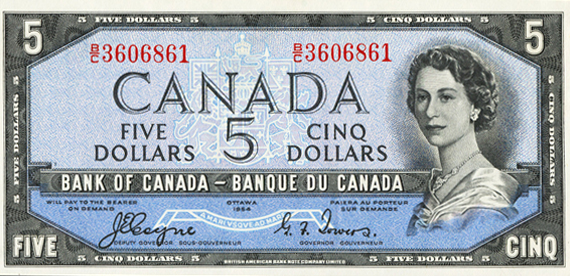

5 Dollars Banknote
Canada (1954)
With the ascension to the throne of Queen Elizabeth II in 1952, plates were prepared for the third series of Bank of Canada notes. They were very different from the 1937 series, although the colours and bilingual nature were retained. The portrait was moved from the centre of the bank note to the right-hand side where it was less susceptible to wear caused by the folding of notes. Until 1959, the $5 bank note was printed exclusively by BABN. The back of the note was engraved by C. Gordon Yorke of BABN and depicts Otter Falls on the Aishihik River, Mile 996 Alaska Highway, in southwestern Yukon.
